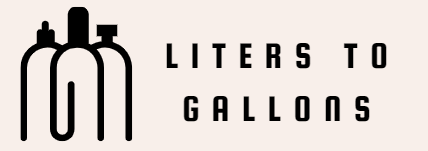Formula to convert 1.4 gallons to liters is to multiply 1.4 by 3.75841178 (this is the value for 1 gallon to liter).
Convert 1.4 Gallons to Liters results
1.4 x 3.78541178 = 5.299576492
1.4 gal = 5.3 l
It’s simple, the answer for 1.4 gallons is five point three zero liters
Formula to convert 1.1 gallons to liters is to multiply 1.1 by 3.75841178 (this is the value for 1 gallon to liter).
Convert 1.1 Gallons to Liters results
1.1 x 3.78541178 = 4.163952958
1.1 gal = 4.16 l
It’s simple, the answer for 1.1 gallons is four point one six liters
Formula to convert 1.2 gallons to liters is to multiply 1.2 by 3.75841178 (this is the value for 1 gallon to liter).
Convert 1.2 Gallons to Liters results
1.2 x 3.78541178 = 4.542494136
1.2 gal = 4.54 l
It’s simple, the answer for 1.2 gallons is four point five four liters
Formula to convert 1 gallons to liters is to multiply 1 by 3.75841178 (this is the value for 1 gallon to liter).
Convert 1 Gallons to Liters results
1 x 3.78541178 = 3.78541178
1 gal = 3.785 l
The road from 1 gallon to liter
Converting between different units of measurement is essential in many fields, including science, engineering and everyday activities.
One of the most common conversions is between gallons and liters. The gallon, used predominantly in the United States and the United Kingdom, and the liter, the standard unit of measure for volume in the International System (SI), are often used to measure liquids.
The ability to convert gallons to liters is crucial for facilitating international communication and cooperation, especially in trade, research and industry.
How is it calculated?
One US gallon is equivalent to approximately 3.78541 liters. The conversion formula is simple.
1 gallon (US)=3.78541 liters
In the case of the imperial gallon, used in the United Kingdom, it is equivalent to approximately 4.54609 liters.
1 gallon (UK)=4.54609 liters
Uses of conversion
The conversion between gallons and liters is frequently used in various situations. In industry and commerce, this conversion is essential for the import and export of liquids, such as oil, chemicals and beverages.
It is also vital in the sciences, where precise measurements are needed for experiments and studies. In everyday life, this conversion is useful for travelers and expats who need to understand the different units of measurement of the countries they are visiting or settling in.
Various approaches
Converting gallons to liters is useful for several reasons. First of all, it facilitates communication and understanding between countries that use different measurement systems.
Second, it helps to standardize and unify measurements in scientific research and global industry. Third, it is essential for people who travel or work abroad, allowing them to easily convert volumetric measurements to adapt to new conditions.
The gallon-liter conversion is frequently used in many fields. In the automotive industry, for example, fuel consumption is often measured in gallons in the United States, but in liters in many other countries.
In agriculture, irrigation and the use of pesticides require accurate volume measurements, and conversions are necessary for the compatibility of equipment and methodologies.
In the food and beverage industry, manufacturers and distributors must frequently convert between gallons and liters to meet the demands of international markets.
It’s simple, the answer for 1 gallons is three point seven eight five liters
